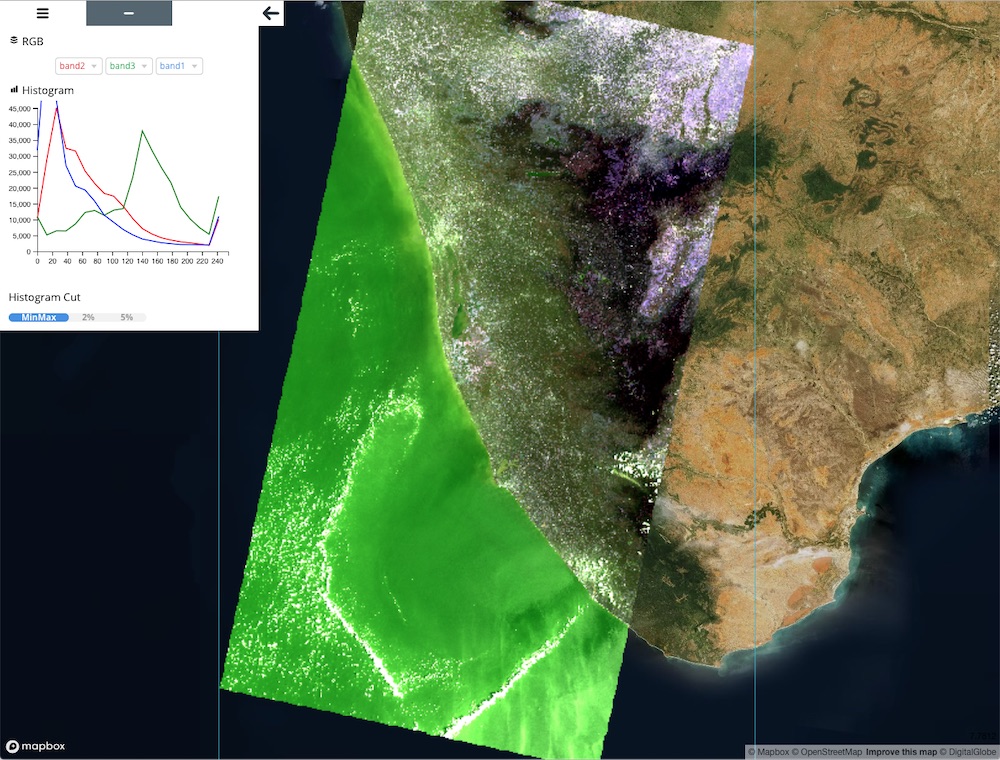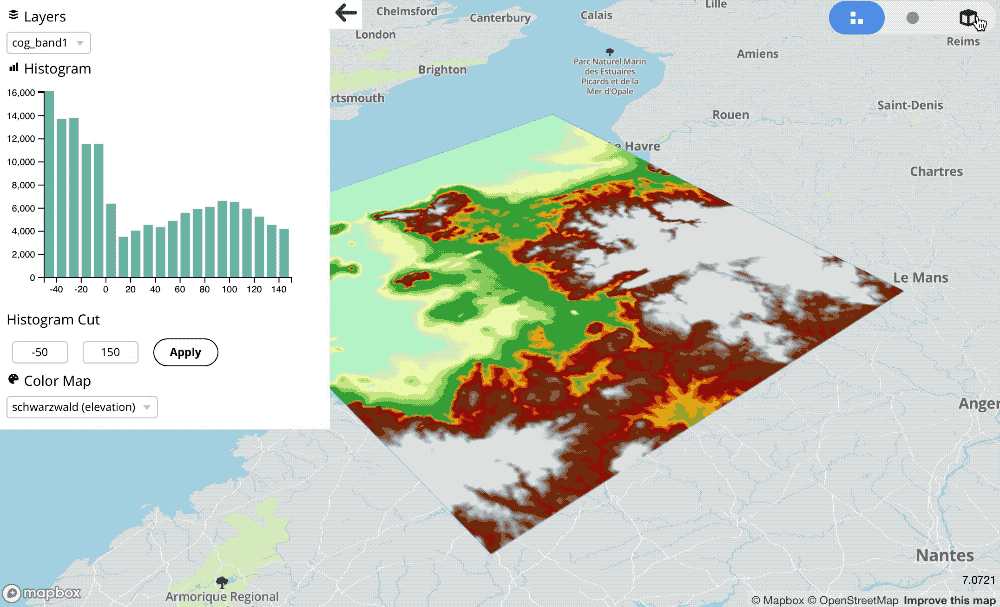Visualize Cloud Optimized GeoTIFF in browser
Project description
rio-viz
Rasterio plugin to visualize Cloud Optimized GeoTIFF in browser.
Freely adapted from the great mapbox/rio-glui
Install
You can install rio-viz using pip
Note: 3d visualization features are optional, you'll need to have cython==0.28 installed before being able to install rio-viz
$ pip install rio-viz
with 3d features
$ pip install -U pip cython==0.28
$ pip install rio-viz[mvt]
Built from source
$ git clone https://github.com/developmentseed/rio-viz.git
$ cd rio-viz
$ pip install -e .
How To
$ rio viz --help
Usage: rio viz [OPTIONS] SRC_PATHS...
Rasterio Viz cli.
Options:
--nodata NUMBER|nan Set nodata masking values for input dataset.
--minzoom INTEGER Overwrite minzoom
--maxzoom INTEGER Overwrite maxzoom
--style [satellite|basic] Mapbox basemap
--port INTEGER Webserver port (default: 8080)
--host TEXT Webserver host url (default: 127.0.0.1)
--mapbox-token TOKEN Pass Mapbox token
--no-check Ignore COG validation
--simple Launch simple viewer
--help Show this message and exit.
Note:
You can provide multiple paths (e.g: bands stored as separate path) to rio-viz:
```bash
$ rio viz https://s3.eu-central-1.amazonaws.com/remotepixel-eu-central-1/sentinel-s2-l1c/tiles/18/T/XR/2019/4/21/0/B0{4,3,2}.tif
Experimental
rio-viz supports Mapbox VectorTiles encoding from a raster array. This feature was added to visualize sparse data stored as raster but will also work for dense array. This is highly experimental and might be slow to render in certain browser and/or for big rasters.
Template Factories
The HTML templates provided by rio-viz may be injected into an
external FastAPI app using the factory functions defined in rio_viz.templates.template. This allows the raw HTML to
be reused in external applications without deploying rio-viz. The parameters passed to each factory define which
endpoints are used by the template. For example, if the path operation to create a tilejson is bound to the
create_tilejson function and the path operation to read metadata about a COG is bound to the read_info function, a
dependency can be created as follows:
from rio_viz.templates.template import create_simple_template_factory
dependency = create_simple_template_factory(tilejson="create_tilejson", info="read_info")
Contribution & Development
Issues and pull requests are more than welcome.
dev install
$ git clone https://github.com/developmentseed/rio-viz.git
$ cd rio-viz
$ pip install -e .[dev]
Python3.7 only
This repo is set to use pre-commit to run my-py, flake8, pydocstring and black ("uncompromising Python code formatter") when commiting new code.
$ pre-commit install
Authors
Created by Development Seed
Project details
Release history Release notifications | RSS feed
Download files
Download the file for your platform. If you're not sure which to choose, learn more about installing packages.

















